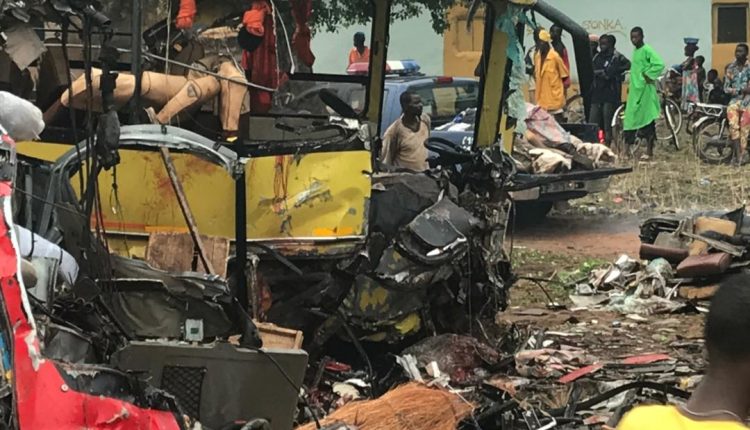
The Director of Public Health at the Ghana Health Service, Dr Badu Sarkodie has said the high carnage being recorded on the country’s roads are partly because of poor sight among drivers.
“Poor sight is a major risk factor for the majority of carnage on our roads,” said Dr Sarkodie Monday at the launch of the official launch of the National Cataract Outreach Programme (NACOP) in the Eastern Region.
“Lot of accidents do occur because the drivers don’t see well, some of them even don’t know they are visually impaired, but these are the people, driving us from one destination to another and we have a lot of accidents on our roads due to poor sight.”
As of the end of November 2016, Ghana had recorded a total of 11,378 road crashes countrywide involving 17,746 vehicles, of which the total number of casualties stood at 12,154 comprising 1,990 deaths and 10,154 injuries.
May Obiri Yeboah, the Executive Director of the National Road Safety Commission, at a press briefing in Accra, said the figures, compared with those recorded during the same period in 2015, involving the total number of reported cases- vehicles, injuries and fatalities- showed increases of 14.88 per cent, 14.45 per cent, 33.74 per cent and 20.19 per cent respectively.
About 300,000 Ghanaians risk of going blind
Dr Samuel Kaba Akoriyea who also spoke at the launch of the NACOP disclosed that about 300,000 Ghanaians at risk of going blind.
Already, about 200,000 individuals have gone totally blind with cataract being the leading cause.
The prevalence rate of blindness in the country is at 7.4 per thousand, representing 207,200 people living with total blindness while severe visual impairment is 10.7 per thousand representing 299,600 people currently living with visual impairment in Ghana.
Globally, more than 285million people are visually impaired with about 39million of these totally blind.
About 40,000 cataract surgeries required annually
Found to be the leading cause of blindness in Ghana, contributing to about 55 per cent of all blindness in the country together with glaucoma and diabetic retinopathy, Dr Sarkodie said “if we address these three conditions, we are close to about 90 per cent preventing and protecting against blindness and visual impairment in the country.
That’s where the National Cataract Outreach Programme comes in as about 40,000 cataract surgeries are required to be conducted yearly among Ghanaians, per the Head of the Eye Care Unit of the GHS Dr James Addy. Ghana, currently, is about 15,000 to 16,000 cataract surgeries far below the set target due to many challenges.
The GHS thus entered into an agreement with the Himalayan Cataract Project of the USA to fund the NACOP which is aimed at helping reduce the deficit by performing 30,000 cataract surgeries on patients annually by 2020.
“There’s no need for our countrymen and women to go blind with cataract. That’s why this programme has been put in place to screen people, diagnose them and perform surgeries to restore their lives,” the Director of Institutional Care Division of the Ghana Health Service (GHS) D.r Samuel Kaba Akoriyea said at the NACOP launch.
Source: Ghana/Starrfmonline.com/103.5FM




